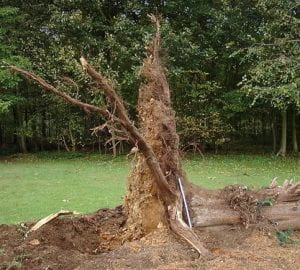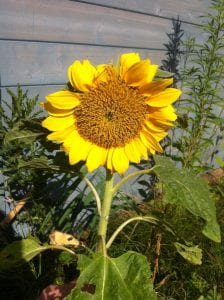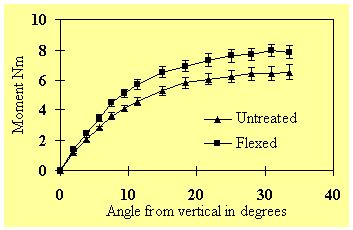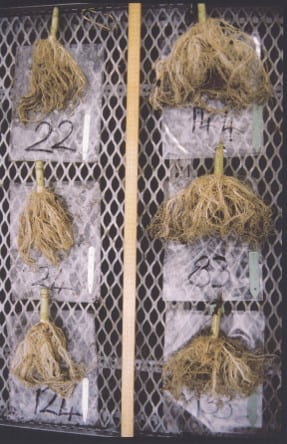It is well known that plants respond to mechanical stimuli, such as swaying in the wind, by a reduction in shoot height and an increase in stem diameter. This response (termed ‘thigmomorphogenesis’) is clearly adaptive; the trunks of trees can become elliptical in cross-section with the major axis aligned in the direction of the prevailing wind. However, until recently the responses of root systems have largely been ignored, despite their vital role in anchoring plants and preventing them from falling over.

 I have completed a series of studies on sunflowers (Helianthus annuus L.) and maize (Zea mays L.) where plants in which the stems have been flexed were compared with still ones. These are two herbaceous species with contrasting anatomy and morphology: the dicot sunflower, which has extensive secondary thickening, and the monocot maize, in which no secondary thickening takes place.
I have completed a series of studies on sunflowers (Helianthus annuus L.) and maize (Zea mays L.) where plants in which the stems have been flexed were compared with still ones. These are two herbaceous species with contrasting anatomy and morphology: the dicot sunflower, which has extensive secondary thickening, and the monocot maize, in which no secondary thickening takes place.
Results
Sunflower and maize plants are able to adapt both the morphology and mechanical properties of their roots in response to mechanical stresses such as wind loading (Goodman and Ennos, 1996). Mechanically stimulated plants had more numerous, thicker and stiffer roots than still plants. Recent work suggests that there is also a local response to mechanical stimulation (Goodman and Ennos, 1997; 1998; 2001). This appears to be in addition to the whole plant effects which have been previously studied.


